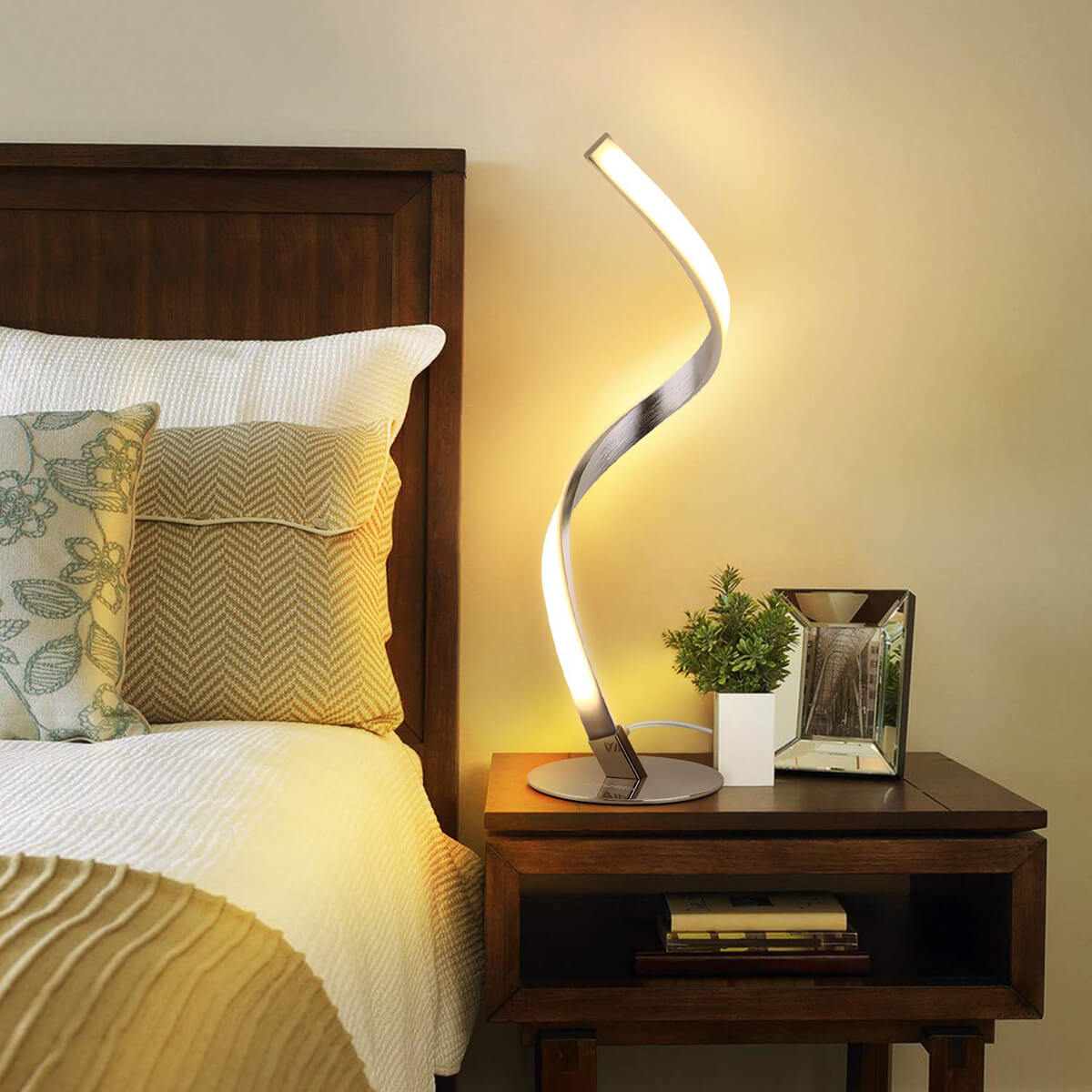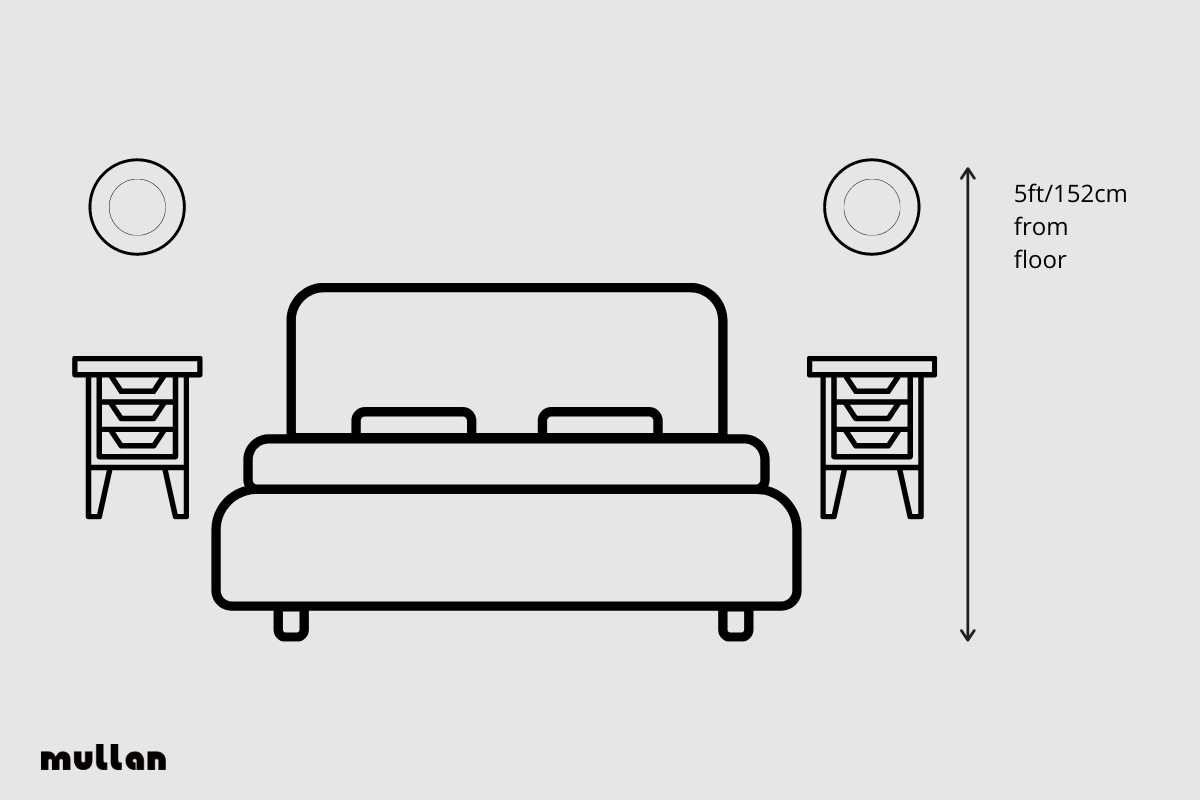Types of Hardwired Bedroom Reading Lights

Hardwired bedroom reading lights offer a permanent and reliable solution for illuminating your bedtime reading. These lights are directly connected to your home’s electrical system, eliminating the need for cords or batteries. The type of hardwired reading light you choose will depend on your personal preferences, the layout of your bedroom, and your desired level of functionality.
Sconces
Sconces are wall-mounted fixtures that provide a focused light source. They are ideal for bedrooms with limited space, as they don’t take up any floor or table space. Sconces come in various styles, from traditional to modern, and can be customized to match your bedroom’s décor.
Sconces offer several advantages:
- Space-saving: Sconces mount directly on the wall, freeing up valuable floor and table space.
- Versatile: Sconces are available in a wide range of styles and finishes, making it easy to find one that complements your bedroom’s décor.
- Adjustable: Many sconces feature adjustable arms that allow you to direct the light where you need it most.
- Dimmable: Some sconces offer dimming capabilities, allowing you to adjust the brightness to your liking.
Sconces also have some drawbacks:
- Installation: Installing a sconce requires electrical wiring and may require the assistance of a qualified electrician.
- Limited Light Output: Compared to overhead fixtures, sconces typically provide a more focused and less intense light.
Examples of sconces include:
- Traditional Sconces: These sconces often feature ornate designs, such as a candelabra or a classic arm-and-shade style. They are often made from materials like brass, bronze, or wrought iron.
- Modern Sconces: Modern sconces are characterized by their sleek and minimalist designs. They are often made from materials like chrome, stainless steel, or glass.
- Industrial Sconces: Industrial sconces have a more rugged and utilitarian aesthetic. They are often made from materials like metal, wood, or concrete.
Bedside Lamps
Bedside lamps are freestanding fixtures that are placed on nightstands or other surfaces near the bed. They provide a direct and adjustable light source for reading. Bedside lamps come in a variety of styles, from simple and minimalist to elaborate and ornate.
Bedside lamps offer several advantages:
- Flexibility: Bedside lamps can be easily moved and repositioned to suit your needs.
- Variety: Bedside lamps are available in a wide range of styles, sizes, and finishes.
- Adjustable: Many bedside lamps feature adjustable arms or shades that allow you to direct the light where you need it most.
- Dimmable: Many bedside lamps offer dimming capabilities, allowing you to adjust the brightness to your liking.
Bedside lamps also have some drawbacks:
- Space: Bedside lamps require a surface to sit on, which may not be available in all bedrooms.
- Cord Management: Bedside lamps often have cords that need to be managed to prevent tripping hazards.
Examples of bedside lamps include:
- Table Lamps: These lamps have a base and a shade, and they are typically placed on a nightstand or table.
- Floor Lamps: These lamps have a tall stand and a shade, and they are typically placed next to the bed.
- Swing Arm Lamps: These lamps have an adjustable arm that allows you to direct the light where you need it most. They are often mounted on a wall or a desk.
Overhead Fixtures
Overhead fixtures, such as ceiling lights or chandeliers, can also be used as reading lights. However, they are not as common as sconces or bedside lamps because they provide a more general illumination and may not be as focused.
Overhead fixtures offer several advantages:
- Wide Coverage: Overhead fixtures provide a broader illumination, making them suitable for reading in bed or for general room lighting.
- Variety: Overhead fixtures are available in a wide range of styles and sizes, from simple and modern to elaborate and ornate.
Overhead fixtures also have some drawbacks:
- Less Focused Light: Overhead fixtures typically provide a more general illumination, which may not be as ideal for focused reading.
- Limited Adjustability: Most overhead fixtures do not offer adjustable arms or shades, making it difficult to direct the light where you need it most.
Examples of overhead fixtures include:
- Ceiling Lights: These lights are typically mounted on the ceiling and provide a general illumination.
- Chandeliers: These lights are typically suspended from the ceiling and provide a more decorative and ornate illumination.
Installation and Wiring Considerations

Installing hardwired reading lights in a bedroom involves a few steps and considerations to ensure safe and proper operation. This section will guide you through the process, outlining the necessary tools and materials, explaining different wiring configurations, and providing instructions for connecting the wiring.
Tools and Materials
Before starting the installation, gather the following tools and materials:
- Screwdriver: A Phillips-head screwdriver is essential for working with electrical components.
- Wire strippers: Use wire strippers to remove insulation from electrical wires, exposing the bare conductors.
- Voltage tester: This tool helps determine if the power is off and verifies that the circuit is de-energized before working on it.
- Wire connectors: These are used to connect the wires together securely, ensuring a reliable electrical connection.
- Electrical tape: This tape is used to insulate exposed wires and prevent accidental contact.
- Stud finder: This tool helps locate wall studs, which are necessary for securing the electrical box and light fixture.
- Level: A level ensures that the light fixture is mounted straight and aesthetically pleasing.
- Drill: A drill is needed to create pilot holes for screws and to secure the electrical box to the wall.
- Safety glasses: Protect your eyes from debris and potential hazards during the installation process.
- Hardwired reading light fixture: Choose a fixture that meets your aesthetic and functional requirements.
- Electrical box: A suitable electrical box is required to house the wiring and provide a secure mounting point for the fixture.
- Wiring: Select the appropriate gauge and type of wiring based on the fixture’s wattage and local electrical codes.
Wiring Configurations
Hardwired reading lights can be installed using different wiring configurations, each with its own advantages and considerations:
- Single-pole switching: This is the simplest configuration, where a single switch controls the light fixture. The power runs directly from the electrical panel to the switch, then to the light fixture.
- Three-way switching: This configuration allows you to control the light fixture from two different locations. It involves two three-way switches and a traveler wire that connects the switches. The power flows from the electrical panel to one three-way switch, then to the other three-way switch, and finally to the light fixture.
Connecting the Wiring
Once the electrical box is installed and the wiring is routed, connect the wiring to the light fixture and the electrical outlet. This process involves:
- Turning off the power: Before working with any electrical wiring, always turn off the power to the circuit at the breaker box.
- Identifying the wires: Identify the wires in the electrical box using a voltage tester or by their color coding. Typically, black wire is the “hot” wire, white wire is the “neutral” wire, and green or bare copper wire is the “ground” wire.
- Connecting the wires: Connect the wires to the light fixture and the electrical outlet according to the manufacturer’s instructions and local electrical codes. Use wire connectors or wire nuts to ensure secure connections.
- Securing the fixture: Secure the light fixture to the electrical box using the mounting screws provided.
- Testing the fixture: Once the wiring is complete, turn the power back on and test the fixture to ensure it is working correctly.
Design and Aesthetics: Hardwired Bedroom Reading Lights

Hardwired reading lights are not just functional; they can significantly contribute to the overall aesthetic of your bedroom. Choosing the right style and design can enhance your bedroom’s ambiance and create a more inviting and personalized space.
Integrating Hardwired Reading Lights into Different Bedroom Styles, Hardwired bedroom reading lights
Integrating hardwired reading lights into your bedroom’s design requires careful consideration of the overall aesthetic. Here are some ideas for different bedroom styles:
- Modern Bedroom: For a modern bedroom, opt for sleek and minimalist designs. Consider geometric shapes, chrome finishes, and LED bulbs for a contemporary feel. A wall-mounted reading light with a flexible arm, or a minimalist track lighting system with adjustable spotlights, can seamlessly blend into the modern aesthetic.
- Traditional Bedroom: For a traditional bedroom, choose reading lights with classic elements like brass or bronze finishes, ornate details, and warm-toned bulbs. A bedside lamp with a fabric shade or a swing-arm reading light with a traditional design can complement the elegance of a traditional bedroom.
- Minimalist Bedroom: A minimalist bedroom emphasizes simplicity and functionality. Choose a reading light with a clean, uncluttered design, like a simple wall-mounted fixture or a small desk lamp with a minimalist base. Avoid overly decorative elements and focus on the light’s functionality.
Choosing the Right Size, Shape, and Finish
The size, shape, and finish of your reading light can greatly impact its visual appeal and integration into your bedroom decor.
- Size: The size of the reading light should be proportionate to the size of your bedroom and the furniture it’s placed near. A small reading light might look lost in a large bedroom, while a large light could overwhelm a smaller space.
- Shape: The shape of the reading light should complement the overall design of your bedroom. For example, a rectangular reading light might be a good choice for a modern bedroom, while a rounded light might be more suitable for a traditional bedroom.
- Finish: The finish of the reading light should complement the color scheme and materials used in your bedroom. A brushed nickel finish might work well with a contemporary bedroom, while a polished brass finish might be more appropriate for a traditional bedroom.
Styles of Hardwired Reading Lights and Corresponding Bedroom Aesthetics
Here’s a table showcasing different styles of hardwired reading lights and their corresponding bedroom aesthetics:
| Style | Bedroom Aesthetic | Swing-arm Reading Light | Traditional, Modern, Industrial | Wall-mounted Reading Light | Modern, Minimalist, Contemporary | Desk Lamp | Traditional, Modern, Transitional | Track Lighting | Modern, Contemporary, Industrial | Pendant Light | Traditional, Modern, Industrial |
|---|
Hardwired bedroom reading lights are a necessity for any discerning homeowner who values a good night’s sleep. While the choice of light fixture is important, one should also consider the overall aesthetic of the bedroom. A well-designed room might feature grey and purple bedroom curtains , a color scheme that evokes a sense of sophistication and tranquility.
Ultimately, the success of a hardwired reading light depends on the harmony it creates with the surrounding decor, making it an integral part of the bedroom’s overall design.
While hardwired bedroom reading lights offer a practical solution, their fixed placement often restricts flexibility. For a more whimsical and atmospheric approach, consider ceiling star lights for bedroom , transforming your space into a celestial dreamscape. However, if you prioritize focused illumination for reading, hardwired lights remain the more functional choice.
